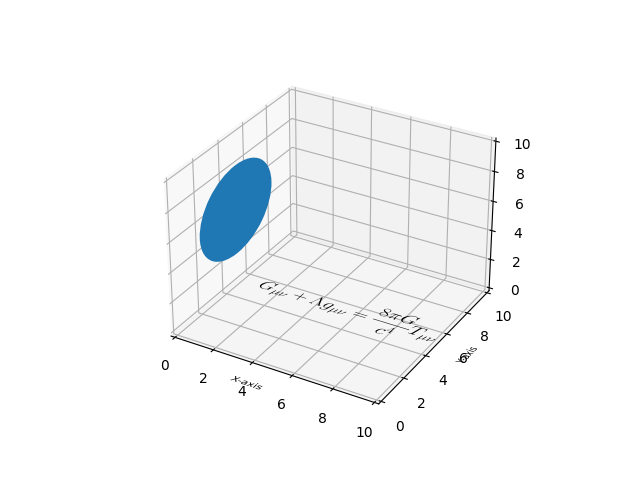Notiz
Klicken Sie hier , um den vollständigen Beispielcode herunterzuladen
Flache Objekte im 3D-Plot zeichnen #
Demonstrieren Sie die Verwendung pathpatch_2d_to_3dzum „Zeichnen“ von Formen und Text auf einem 3D-Plot.

import numpy as np
import matplotlib.pyplot as plt
from matplotlib.patches import Circle, PathPatch
from matplotlib.text import TextPath
from matplotlib.transforms import Affine2D
import mpl_toolkits.mplot3d.art3d as art3d
def text3d(ax, xyz, s, zdir="z", size=None, angle=0, usetex=False, **kwargs):
"""
Plots the string *s* on the axes *ax*, with position *xyz*, size *size*,
and rotation angle *angle*. *zdir* gives the axis which is to be treated as
the third dimension. *usetex* is a boolean indicating whether the string
should be run through a LaTeX subprocess or not. Any additional keyword
arguments are forwarded to `.transform_path`.
Note: zdir affects the interpretation of xyz.
"""
x, y, z = xyz
if zdir == "y":
xy1, z1 = (x, z), y
elif zdir == "x":
xy1, z1 = (y, z), x
else:
xy1, z1 = (x, y), z
text_path = TextPath((0, 0), s, size=size, usetex=usetex)
trans = Affine2D().rotate(angle).translate(xy1[0], xy1[1])
p1 = PathPatch(trans.transform_path(text_path), **kwargs)
ax.add_patch(p1)
art3d.pathpatch_2d_to_3d(p1, z=z1, zdir=zdir)
fig = plt.figure()
ax = fig.add_subplot(projection='3d')
# Draw a circle on the x=0 'wall'
p = Circle((5, 5), 3)
ax.add_patch(p)
art3d.pathpatch_2d_to_3d(p, z=0, zdir="x")
# Manually label the axes
text3d(ax, (4, -2, 0), "X-axis", zdir="z", size=.5, usetex=False,
ec="none", fc="k")
text3d(ax, (12, 4, 0), "Y-axis", zdir="z", size=.5, usetex=False,
angle=np.pi / 2, ec="none", fc="k")
text3d(ax, (12, 10, 4), "Z-axis", zdir="y", size=.5, usetex=False,
angle=np.pi / 2, ec="none", fc="k")
# Write a Latex formula on the z=0 'floor'
text3d(ax, (1, 5, 0),
r"$\displaystyle G_{\mu\nu} + \Lambda g_{\mu\nu} = "
r"\frac{8\pi G}{c^4} T_{\mu\nu} $",
zdir="z", size=1, usetex=True,
ec="none", fc="k")
ax.set_xlim(0, 10)
ax.set_ylim(0, 10)
ax.set_zlim(0, 10)
plt.show()